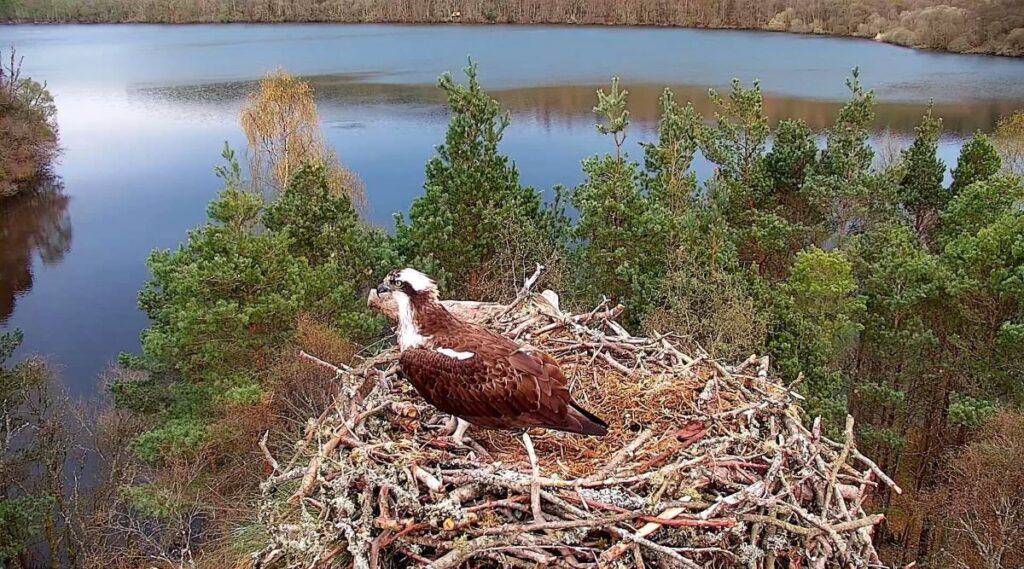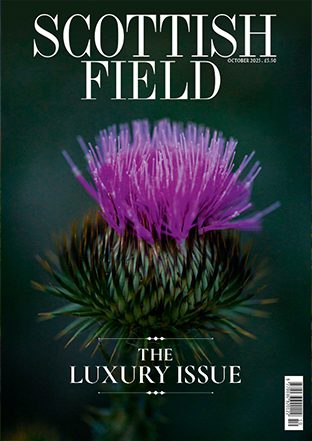
Breeding ospreys lay egg at Loch of the Lowes for the first time this year
A pair of breeding ospreys have laid an egg at Loch of the Lowes wildlife reserve for the first time this year after a competitive mating process.
At least seven different ospreys have been contending for the popular nesting site, however a male and female, now officially known as LM24 and LF25 respectively, have fought off their competitors – at least for the time being.
The first bird to arrive this year was a female known as NC0, who landed on the nest on 17 March. She has previously fledged seven chicks over five years at Loch of the Lowes, all with her former partner LM12, who sadly died of natural causes in 2024. F
ollowing his death, NC0 seemed to pair up with LM24 towards the end of the season, but appears to have lost her hold on the territory before he returned this year. She departed the nest in early April and hasn’t been seen on the reserve since.
LM24, who was known as the Dark Intruder until he successfully returned this season, arrived the following day. Since then, several females have vied for his attention, and after spending a week with an unringed bird, he has since settled onto the nest with LF25, who was previously known as the Dark Female.
The drama has continued right up to the crucial moments – another female intruded upon the nest for several hours just before the laying process began, then even after she left LM24 attempted to mate with LF25 mid-lay.

‘We never knew what to expect this year, however we suspected there could be a battle for the territory after the tragic loss of LM12 in 2024, and that’s exactly what has happened,’ Sara Rasmussen, Perthshire Ranger for the Scottish Wildlife Trust, said.
‘We’ve seen courtship and breeding attempts between different combinations of birds, but with this exciting development, it seems that LM24 and LF25 are holding the territory.
‘We understand there will be some disappointment at NC0 being unseated as the dominant female, but she is still in her prime and has every chance of finding a partner in another territory.
‘For now, we’ve just got our fingers crossed that the new pair at Loch of the Lowes go on to hatch eggs and successfully raise their chicks.’
Osprey eggs normally take between five and six weeks to hatch. The female incubates around 80% of the time, with the male taking over for brief periods so she can feed. Last year, NC0 laid three eggs, but they were destroyed by another male bird around three weeks into the incubation process.
‘As exciting as it is to have an egg, we shouldn’t count our chickens – or ospreys – before they’ve hatched. This is especially true this year, as new breeding pairs often need a few seasons to work things out and become experienced parents,’ Sara added.
‘Whatever happens, we can always guarantee drama with the ospreys. With the intruding female still in the area and the possibility of more eggs to come, there could still be plenty of twists and turns in the story.’
Ospreys were driven to extinction in Britain in the early 20th century, however they naturally recolonised Scotland in the 1950s and their numbers have grown steadily since. The latest estimates suggest there are around 300 breeding pairs across the UK. Most of these birds migrate to West Africa but some overwinter in Spain and Portugal.
Read more Wildlife stories here.
Subscribe to read the latest issue of Scottish Field.
TAGS

